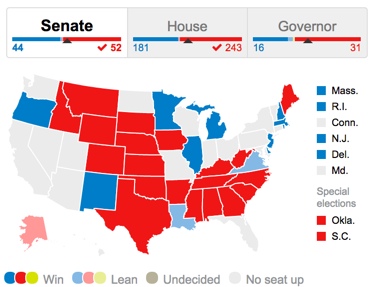Yesterday was election day in the United States. We elect our House of Representatives every two years. Senate terms are 6 years, so there’s only a handful of 100 seats up for grabs during any election cycle. There are basically two facts in the election outcome: Republicans extending their majority in the House with 243 seats and taking leadership in the Senate with 52 seats.

But there are a variety of opinions. Search through various media sources and you can find an analysis piece that meshes with your core beliefs. Liberal or conservative. Republican or Democrat. American or not. Fan of President Obama or otherwise. We’ve got you covered.
In the analytics industry, we’re frequently reminded by our tool vendors how awful it could be that users might show up to a meeting and argue over different sets of facts, especially with the current batch of “data discovery” tools that allow users to (gasp) analyze numbers that may not have come from the enterprise data warehouse. But an election is proof that you can have a single version of the truth- the vote counts- and still have an endless buffet of opinions about what the election results mean and what will or should happen next.
This phenomenon is not limited to politics. Perhaps your organization’s sales are up. Perhaps they’re not. Maybe that new product is beating sales expectations. Maybe it isn’t. Even if the facts aren’t in dispute, there may not be consensus on the next steps for leadership to take. We’re all human. And we all excel at making any set of facts fit our perception of reality, whether true or not. We’ll see what we want to see.
In the US government, we have “checks and balances” that allow a diverse set of voices to forge the (often messy) path forward. May it be so in our own organizations.
Food for thought.



